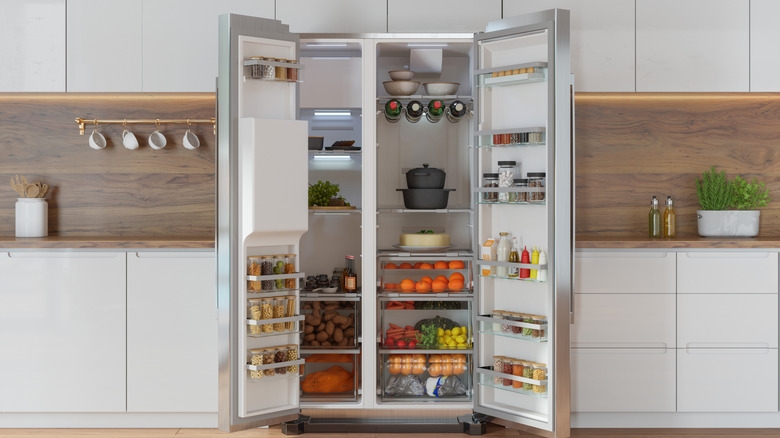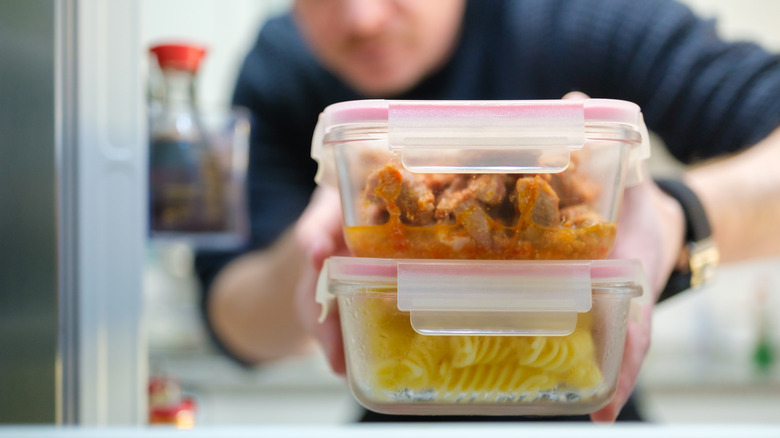The 2-2-2 Leftover Rule That Ensures Food Safety
Leftovers are one of life's most underrated pleasures. They might come from last night's Chinese takeout, brisket that you're planning to repurpose into a new dish, or they can take the form of a freshly made stock ready to enrich future braises and stews — even vegetable scraps can be saved! But once opened and exposed to air and bacteria, food inevitably begins to spoil. Spoiled food can cause a whole host of unpleasant effects like food poisoning to developing meningitis, so it's important to take steps to prevent it. How? By using the 2-2-2 rule, of course. Developed by Love Food Hate Waste in a bid to tackle food waste, the 2-2-2 rules offers a simple yet effective guide for handling leftovers. Give your food two hours outside the fridge, store it safely in the refrigerator for up to two days, or keep it in the freezer for up to two months.
While this rule is a great starting point, there are several other variables that come into play with leftovers. One such variable in temperature. Take seafood, which should be left at room temperature for no more than two hours, but if that temperature is above 90 degrees Fahrenheit, that window shortens to just one hour. The same caution should be applied to all food, since warm temperatures quickly speed up the growth of bacteria. So during the summer months, the 2-2-2 rule should become the 1-2-2 rule.
Also, cooked foods generally last longer than raw ones. Cooked meats can be kept for up to three days, but raw poultry like opened chicken breast should be cooked and consumed within one to two days.
Combine the 2-2-2 rule with these for extra food safety
The 2-2-2 rule is a strong guide for reducing food waste and ensuring safety. When combined with other smart food storage practices, it can guarantee both freshness and peace of mind. Take the "two days in the fridge" rule, for example. Although timings vary, setting two days as a limit will ensure your leftovers are freshest. Leaving food in the fridge for longer can cause it to dry out as the cool, dry air pulls out moisture, ruining both the taste and texture of your leftovers before spoilage even gets a chance to set in. To preserve quality, you can enhance the "two days in the fridge" rule by always storing your leftovers in an airtight container.
Beyond bacterial growth, another major cause of food spoilage is oxidation, a process where oxygen reacts with food molecules, gradually diminishing flavor and freshness – just take a look at what happens to steak when it's oxidised. By using an airtight container, you're limiting the exposure of your leftovers to air. Even the FDA recommends that all leftover food can be covered to reduce contamination risk.
For maximum freshness, store leftovers on the bottom shelf, the coldest part of the fridge. Avoid the door shelves, as they're frequently exposed to warm air when opened. Make sure to separate leftovers from raw foods to prevent cross-contamination — a simple way to do this is by storing cooked leftovers above raw items so that nothing drips down onto them.


